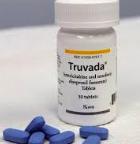The early 1990s were known as the dark days of AIDS. After more than a decade of intensive research, the death rate from HIV infection remained at 100%. It was not until 1995, when Roche launched Invirase – the first effective AIDS drug, that the death rate began to decline.
What is perhaps, the biggest and most successful medical research campaign ever – one that involved collaboration between government, academia, and the pharmaceutical industry – paid off. There are now 33 approved AIDS drugs, forming the basis for the HAART cocktails (1,2) that have pushed AIDS from the front page of newspapers to an occasional mention now and then.
Although getting to this point required effort by government, academia, and industry, most of the heavy lifting was done by industry. Of the 33 approved drugs, 29 were invented by drug companies (4). The most widely used AIDS drug is Gilead's Truvada (5), which is used for both the treatment of infection and PrEP (6). Truvada has saved countless lives around the world.
Gilead, like most other drug companies, has been under constant pressure about the high prices it charges and the ridiculous profits it makes. It is not unusual to hear calls for breaking patents, especially from activist groups, so that drugs can be sold for a generic price. One of these groups, Breakthepatent, has been especially active in trying to push this agenda:
Right now, a miracle drug is being withheld from the American public that can reduce the risk of HIV transmission by more than 99%. The drug is called Truvada and when taken daily as Pre-Exposure Prophylaxis (PrEP) can help provide almost absolute protection against the virus.
So why aren’t more people taking it? The manufacturer of the Truvada, Gilead Sciences, has inflated the price by more than 25,000%.
You read that right. The drug costs less than $6 a month to make but Gilead charges patients more than $1,600 for a 30 day supply. This cost barrier has translated to less than 10% of the at risk population currently taking the medication.
There are at least three problems with this statement:
- No matter how you spin it, breaking a patent is theft. A company's intellectual property, which is in the form of patent exclusivity, is invaluable. Without patent protection, no new drugs would be discovered. No company will spend $2 billion and 10 years to get a new drug approved only to have generic companies, which did not spend $2 billion, step in and start selling it for less the day after FDA approval.
- The "miracle drug being withheld from the American public that can reduce the risk of HIV transmission by more than 99%" was invented by Gilead. Without Gilead, there is no miracle drug. And Truvada - the miracle drug - is not being "withheld" from anyone. Breakthepatent just thinks it's too expensive.
- The statement that the drug "costs less than $6 a month" is nonsense. First pills cost $2 billion to make, the second pill less than a buck. Material costs are rarely a significant contributor to final drug costs.
Gilead recently received FDA approval for Descovy, a drug that is similar to Truvada but has fewer side effects, especially kidney toxicity and bone loss. Without the profits made by selling Truvada would Descovy have been invented at all? Or how about other drugs (7)?
I'm not sure what "too high" means when discussing life-saving drugs, but it safe to say that most drugs are expensive, and prohibitively so for some people. There are ways to lower drug prices (changes in insurance policies, expanding coverage, negotiation with companies, patient assistant plans, etc., which are may or may not be successful and will never satisfy everyone.
But theft is not the way to deal with these issues. Without patent protection, drug discovery would come to a screeching halt. This will help no one (8).
[My 2012 Wall Street Journal op-ed on the necessity of pharmaceutical patents can be found here.]
NOTES:
(1) HAART stands for highly active antiretroviral therapy.
(2) There are actually about 40 approved HIV drugs, but some of them are single-pill combinations of known drugs. I have omitted these.
(3) This plan would seem to be overly ambitious. Although the drugs do an excellent job in halting the transmission of the virus distribution and poor compliance are making the eradication effort more difficult.
(4) An invention is defined by the name(s) on the patent. If the name(s) are pharmaceutical company researchers then it is the company that made the invention. (The scientist(s) named on the patent assign rights to the company; they do not get directly rewarded by the company.)
(5) There is nothing especially innovative about Truvada; it is a pill that contains one old drug in combination with a pro-drug of another old drug. Nonetheless, Gilead was granted a patent for the combination.
(6) PrEP is short for pre-exposure prophylaxis – a way for people who do not have HIV but who are at high risk of getting HIV to prevent becoming infected by taking a pill every day.
(7) Gilead used $11 billion of those profits to buy Pharmasset, the company that invented Sovaldi - the first successful directing antiviral drug that cured hepatitis C. Sovaldi is on the World Health Organization's List of Essential Medicines. Better drugs have followed; Sovaldi is no longer the standard of care, even though it revolutionized the treatment of hepatitis C.
(8) Our patent system is not perfect. Sometimes companies make trivial changed in the drug or how it is formulated and are granted a new patent, even though there may be very little innovation. In 2017 I criticized Astra Zeneca for doing just this (See Nexium: The Dark Side Of Pharma)
DISCLAIMER: ACSH has received two small donations from Gilead. Both together account for well less than 1% of our annual budget.




